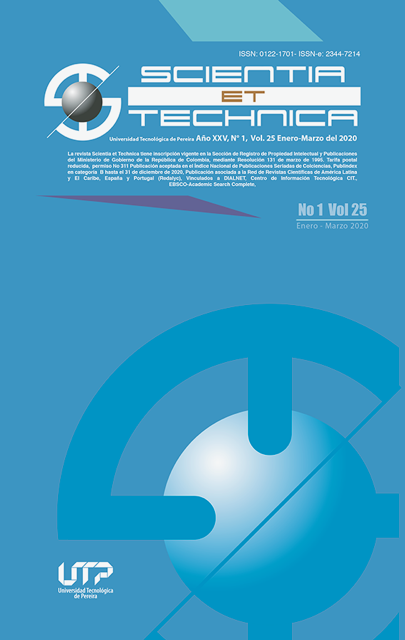Automatic Dissolved Oxygen Control to Oreochromis Fish’s Crop into Geomembrane Tank
DOI:
https://doi.org/10.22517/23447214.23651Keywords:
Automatic, Control, Dissolved Oxygen, Oreochromis fishAbstract
Huila is a Colombian state with a high production of Oreochromis fish, its contribution to national production is of 53%, that is distributed in 338 hectares of ponds on land and floating cages. The environmental and climatic characteristics of the region allow having dissolved oxygen production in the ponds between 4ppm and 12ppm during the day, but at night the situation is unfavorable, since the amount of dissolved oxygen can decrease up to 1ppm while carbon dioxide increases. Therefore, it is necessary to have adequate oxygenation equipment and systems to prevent delayed in fish growth and to decrease death rates. This article presents the design and implementation of an automatic dissolved oxygen control system by manipulation of a water recirculation flow that operates in parallel with an industrial oxygen generator. The implemented system tracks and records the temperature and oxygen variables present in the geomembrane tank to evaluate the process evolution for different periods of the fish development cycle. The data was acquired using an Atlas Scientific dissolved oxygen sensor kit and a DS18B20 temperature probe they send the data directly to a Raspberry Pi that transmits by wireless the information collected from the process to the SISCEFA web server and a mobile application through which users can observe the data traceability. The dissolved oxygen concentration was maintained within the threshold established and the fish rate death decrease.
Downloads
Downloads
-
Vistas(Views): 1040
- PDF Descargas(Downloads): 467
Published
How to Cite
Issue
Section
License
Copyrights
The journal is free open access. The papers are published under the Creative Commons Attribution / Attribution-NonCommercial-NoDerivatives 4.0 International - CC BY-NC-ND 4.0 license. For this reason, the author or authors of a manuscript accepted for publication will yield all the economic rights to the Universidad Tecnológica of Pereira free of charge, taking into account the following:
In the event that the submitted manuscript is accepted for publication, the authors must grant permission to the journal, in unlimited time, to reproduce, to edit, distribute, exhibit and publish anywhere, either by means printed, electronic, databases, repositories, optical discs, Internet or any other required medium. In all cases, the journal preserves the obligation to respect, the moral rights of the authors, contained in article 30 of Law 23 of 1982 of the Government Colombian.
The transferors using ASSIGNMENT OF PATRIMONIAL RIGHTS letter declare that all the material that is part of the article is entirely free of copyright. Therefore, the authors are responsible for any litigation or related claim to intellectual property rights. They exonerate of all responsibility to the Universidad Tecnológica of Pereira (publishing entity) and the Scientia et Technica journal. Likewise, the authors accept that the work presented will be distributed in free open access, safeguarding copyright under the Creative Commons Attribution / Recognition-NonCommercial-NoDerivatives 4.0 International - https://creativecommons.org/licenses/by-nc-nd/4.0/deed.es license.



